A Bengal cat is a pedigree breed, created by mixing Asian Leopard cats with domestic cats.
To be considered a Bengal rather than a wild cat hybrid, the kitten needs to be at least a fourth generation mix.
Fully grown Bengal cats can be between 8 and 15 pounds. But males are generally bigger than females.
But how did these beautiful kittens come about?
Bengal Cat History
Bengal cat history does not date back very far.
They are a recently created breed, first produced in America by mixing the Asian Leopard cat with a domestic cat breed.
It is thought that the first breeders emerged around the same time, for very different reasons.
One was an American doctor, who was trying unsuccessfully to pass on the leopard cat’s immunity to feline leukaemia.
The other was simply a pet owner, who did not realise that her new Asian Leopard cat would be able to breed with her intact resident Tom.
They originally became popular in the US in the 1980’s and were first imported to the UK as recently as 1991.
It was in that year the Bengal Cats became officially recognised by the International Cat Association.
Followed in the next few years by the American Cat Fanciers Association.
What Does Fourth Generation Mean?
We briefly mentioned earlier that all true Bengal cats are fourth generation.
Described as F4, for the fourth filial generation, this is how far removed the kitten is from their wild ancestor.
In this case it would be a domestic cat whose great-great grandparent was an Asian Leopard cat.
Domestic Bengals do not have an Asian Leopard cat as a parent, grandparent or great grandparent.
These would be described as F1, F2 and F3 respectively.
Bengal Cat Temperament
Although the Bengal cat looks like a leopard from the pattern on his coat, his temperament is more a reflection of the common domestic cat.
With a little extra bounce added in for good measure.
They are very playful, enjoying interacting with toys, chasing and running around.
Bengal cats even enjoy playing in water – so it’s a good idea to keep the toilet seat closed when you aren’t using the bathroom!
Bengal Cat Personality
Most Bengals are not natural lap cats due to their lively natures.
They are however, kind and loving to the members of their family.
They will probably not curl up with you on the sofa all evening.
But most would be very happy to play with toys whilst you watch the TV next to them.
Bengal cats do tend to be unusually happy in dogs company too, which is a bonus for any dog owning families.
Despite their recent relationship with wild cats, Bengals aren’t hugely predatory.
Bengal Cat Noise
Bringing home no more of the local wildlife than your average moggy.
Bengal cats make quite distinct noises when they meow, when compared with other domestic breeds.
They are also known for being quite talkative.
Their call is described as ‘cooing’ or ‘chirping’, in addition to making deeper more throaty purring or disgruntled sounds.
Your Bengal House Cat
Bengal cats can make excellent house pets, provided you are around for most of the day.
As intelligent and playful creatures they can get bored when left alone.
Whether you let your Bengal cat outdoors is your choice, as they are a prime candidate for theft.
However as inquisitive and lively creatures they do enjoy some time in the backyard.
This is safer if you live in a rural area where they are unlikely to be predated.
Risks for Going Outside
There are however still risks to allowing any Bengal cat access to the outdoors.
Bengal cats love company, so if you work away from home and they are left alone they may range quite a long distance to find some entertainment.
They are also valuable and beautiful cats, and therefore could be stolen by unscrupulous people.
Two’s company?
Getting two Bengal kittens together is a great way to help keep them entertained.
But the best environment for Bengal cats is one where someone in the family is home for much as the day.
They can also be a little territorial at times.
For this reason it is best to bring home two kittens from the same litter.
They are more likely to get on if they grow up together.
Rather than run a risk introducing a new kitten to a home with an established adult Bengal cat present.
The ideal setting for a Bengal cat is an enclosed catio, so they can have some time outdoors but not access the wider world.
Bengal Cat Characteristics
Bengal cats have a broad, long head and a strong chin.
Their eyes are large, oval and set at a slight slant towards their ears.
They have small forward facing ears with wide bases and rounded tips.
Their bodies should be slim, athletic and well muscled. With long legs and backs and a delicate head.
Bengal cat size ranges from 8 to 15lbs, with males being heavier than females in general.
When they reach maturity at 18 months to 2 years old they should be at around their maximum size.
They have leopard patterned coats, of very soft, satin or silky feeling fur.
They also have a dusting effect, which gives the coat a gold or pearlescent sheen to it.
Bengal Cat Colors
Bengal cats are known for their distinctive leopard print coats, but these actually come in a number of varieties.
They can be spotted or marbled in terms of their patterns, and silver, brown, blue (grey) or snow (white) in shade.
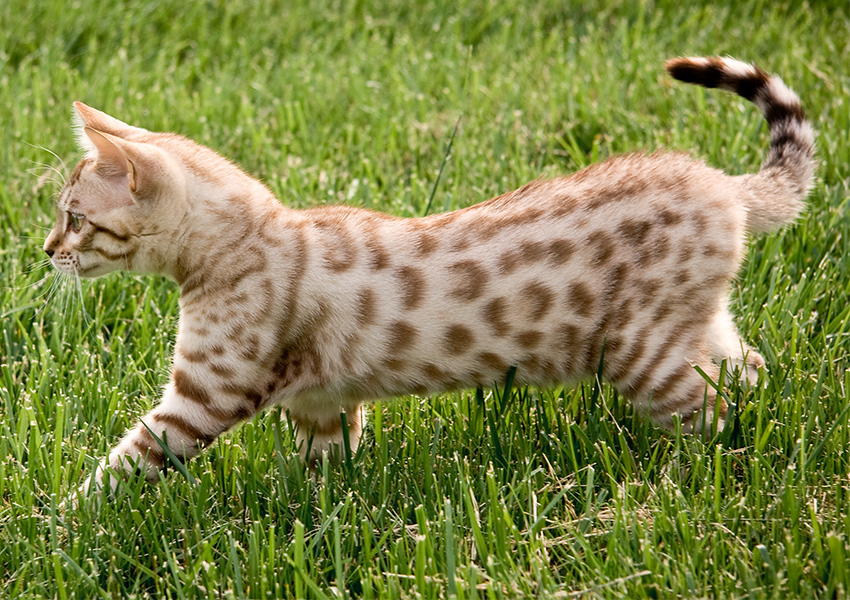
White Bengal cats are described as Snow.
Spotted Bengal cats most closely resemble their wild cat ancestors, with defined spotted markings across their bodies.
Marble Bengal cats have a unique marbled effect to the markings on their coats.
Printed in horizontally aligned swirls along their backs.
Markings on All Bengal Cats
All Bengal cats have a distinctive chin strap marking and light lines along their heads forming spectacles or an M shape.
Their coats have a very eye-catching glimmer, with a dusting effect of gold or pearlescent sheen.
In recent years the breed has further been selectively bred away from their leopard cat origins.
Some Bengals are born with white bellies, as well as more rosette style patterns to their fur.
Do Bengal Cats Shed?
Bengal cats do shed, although not prolifically.
Although Bengal cats have short coats of fur, there do seem to be high numbers of allergies reported for this breed.
So if you are allergic to some cats, a Bengal breed might be best avoided.
Bengal Cat Care
Bengal cats rarely benefit from bathing, but do enjoy a weekly brush if you get them used to it from kitten hood.
This will help to reduce the amount that they shed and promote the quality of the coat.
Bengal Cat Health
As a pedigree breed, Bengal cats are more prone to some hereditary diseases than their moggy cousins.
Hypertrophic Cardiomyopathy
Hypertrophic cardiomyopathy is an inherited form of heart disease.
Make sure that your kittens parents have been screened as clear for this condition.
This will reduce the chance of your kitten suffering from it later in life.
Progressive Retinal Atrophy (PRA)
PRA is an inherited disease which causes blindness, and is common to many pedigree breeds.
Ensure that your kittens parents are PRAb clear.
This will mean you can be confident that your Bengal cat will not develop signs of PRA later in life.
Erythrocyte Pyruvate Kinase Deficiency (PK Deficiency)
PKD Deficiency is a type of haemolytic anaemia.
It can cause the cat to be lethargic, weak, lose appetite, become jaundice or have a swollen stomach.
Bengal cats are prone to this disease, but there is a DNA test available.
Make sure that both your kittens parents have been tested.
They must either both be clear, or one carrier and one clear, in order for your kitten not to suffer as she grows up.
Patellar Luxation
Bengal cats can be prone to joint problems such as patellar luxation.
This is where the knee joint is malformed and prone to dislocation.
It can result in your cat become lame and suffering from pain.
Do not buy a Bengal cat if there is any history of joint problems in this line.
Hip Dysplasia
This is a disease caused by the malformation of the hip joint.
Hip scoring in cats is not common practice.
For this reason, ask the breeder about the history of joint problems in their line.
Ideally the breeder will have had her breeding parents x-rayed and their hips confirmed as in good condition.
However, this might be hard to find.
Therefore the best course of action is to avoid any breeders who raise red flags when discussing their medical history.
Avoid mention of limps, trouble with stairs or reluctance to jump.
Bengal Cat Health Problems
Like many pedigree breeds, Bengal cats do have a number of potential health problems to contend with.
However, provided that you buy your kitten from a breeder committed to health testing, the risks to your cat will be significantly reduced.
How Long Do Bengal Cats Live?
Bengal cats live from 12 up to 16 years on average.
Anecdotally it does seem that many of them live to only 12 years old, which is not a great age for a cat sadly.
Some will live longer than others, and picking a kitten from DNA tested health cleared parents will increase your chances of your cat living longer.
Finding A Bengal Cat
Finding a Bengal cat can be a tricky process, as fully health tested litters are not incredibly frequently available and the demand is very high.
If you are looking to bring home a Bengal Cat of your own, then you first have a choice to make between a Bengal kitten or an adult Bengal cat.
Bengal Kittens
If you decide that a Bengal kitten is the best choice for your family, then your first step will be to find a reputable breeder.
Good breeders will have just a few cats living in their home with them.
They will be in great condition, have a purpose beyond parenting kittens and have had all the relevant health tests carried out.
When you go to collect the kittens at around 13 weeks old they should be very lively and playful.
Their eyes should be clear and their coats should be clean.
You should be able to see the mother of the kittens interacting with them, and she should have the classic temperament of a Bengal cat.
Ask the breeder to see evidence of all health tests and the mother and father’s pedigrees.
Ensure that the kittens have already been vaccinated for cat flu, enteritis, feline leukaemia and chlamydia.
How Much Are Bengal Kittens?
The cost of a Bengal kitten will depend upon where you are located.
It will also be impacted by what health tests the parents have had, and the purpose the kittens were bred for.
In the US you can expect to pay anywhere between $1,000 and $2,000 for a Bengal cat.
Show breeders may charge in excess of $3,000 for potential show quality Bengal kittens.
If you are looking for a cheaper Bengal cat then consider an adult, rescue cat.
Adult Bengal Cat Price
Adult Bengal cats are occasionally available for sale.
Either having been retired from the show ring or due to a sad change in circumstances from a pet home.
When you rehome an adult cat there are certain benefits.
You can be confident in their temperament, and often know a little about their likes and dislikes.
Whether they prefer to spend time with the family or alone, how much they tend to scratch, what toys they prefer.
You also have the option to request health tests on the cat himself rather than his parents.
But not everyone wants a fully grown pet when they arrive.
Bengal Cat Breeders
You are unlikely to find a Bengal cat breeder who uses a first cross.
Bengal cats are only considered to be Bengal cats as opposed to hybrids once they reach the fourth generation.
Be cautious of any household with more than 6 cats.
Not only would this indicate potentially that they were breeding for the wrong reasons, but also it would put the kittens at a far higher risk of developing FIP.
Bengal Cat Mix
With the rising popularity of Bengal cats, there is also a rising trend on the breeding of Bengal mixes.
There are a few benefits to these cats, including lower price.
However, you won’t necessarily get that typical charismatic Bengal personality.
Your kitten’s marking may also not be that defined wild cat pattern, although this should be fairly apparent from the time you visit them with their mother.
It is still sensible to ensure that the Bengal cat parent has been fully health tested, even if the cat they were mated with was not a pedigree himself.
If the other parent is a pedigree of another breed, make sure that they were health tested for any at risk diseases for their breed as well.
Bengal Cat Rescue
Bengal cats do end up in rescue centres from time to time.
You are highly unlikely to know whether they are a pedigree cat, but as they will normally be older you will have a good idea of the cat’s temperament before you bring him home.
If you want a rescue Bengal or Bengal mix, then be prepared to look further afield.
Give your details to lots of rehoming centers and regularly call to see if one has been admitted.
Is A Bengal Cat Right For You?
Bengal cats are not suited to every home.
They are energetic, playful and loud. This breed notoriously craves company and entertainment.
They are unlikely to want to snuggle on your lap all evening, and will probably display rather boisterous behavior.
The best home for a Bengal cat is one which has a completely cat-proof garden, and where someone is home for most of the day.
You need to not be noise averse, and to be looking for a lively new companion.
Make sure that you stock up on cat toys, and get ready for a wonderful, fun new friend to enter your life.
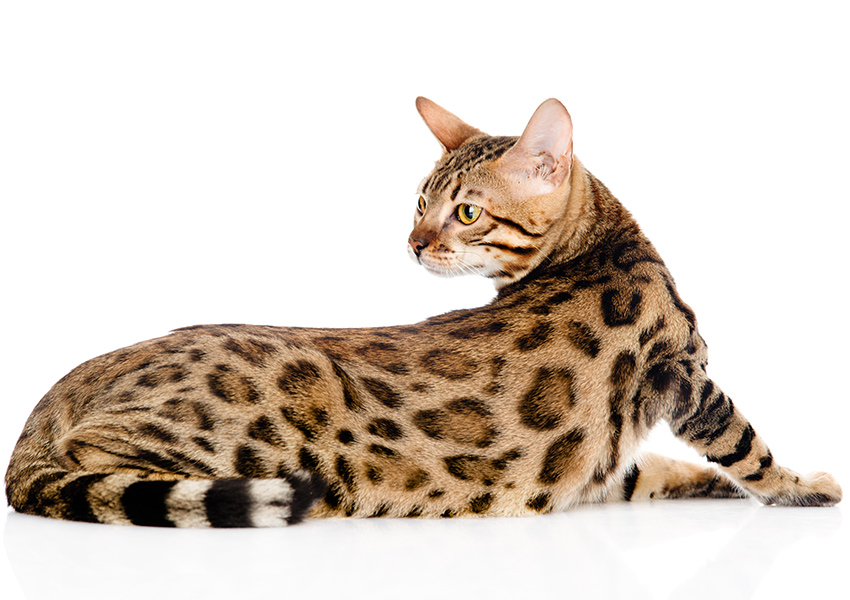
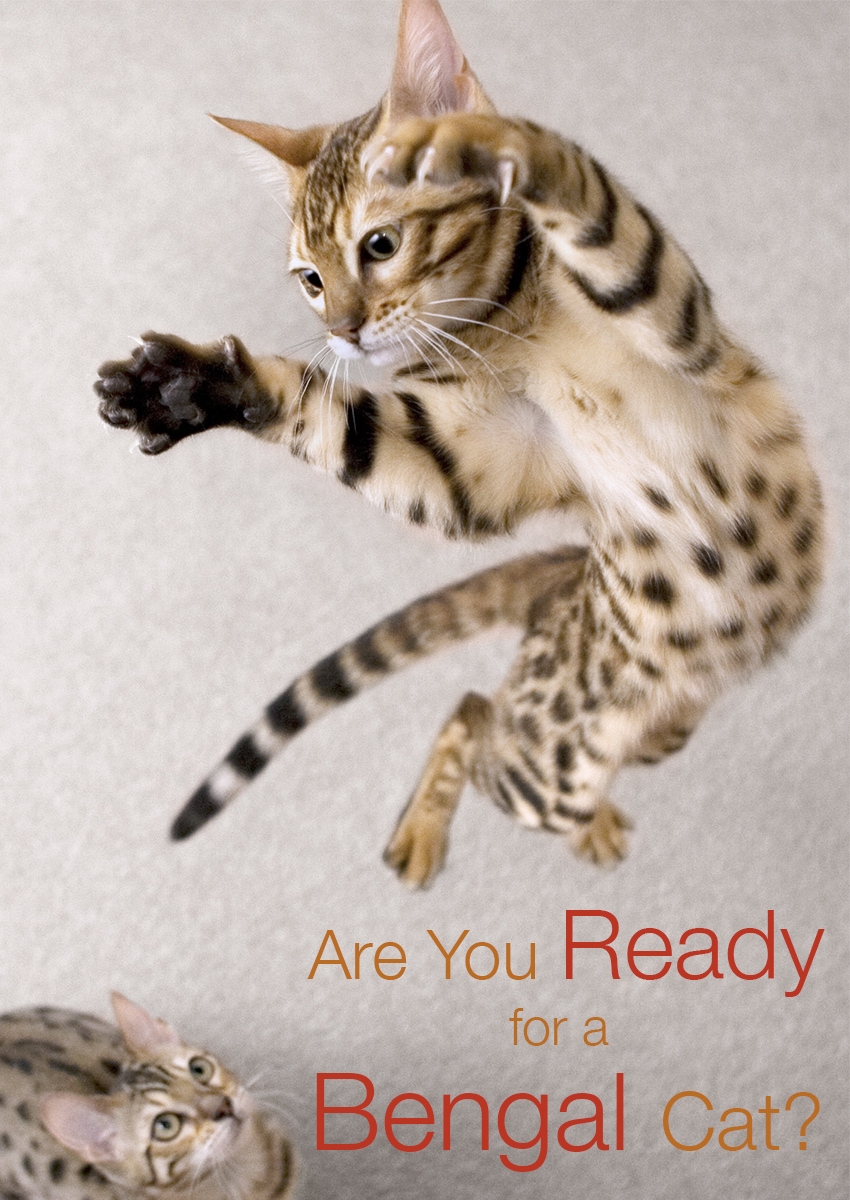
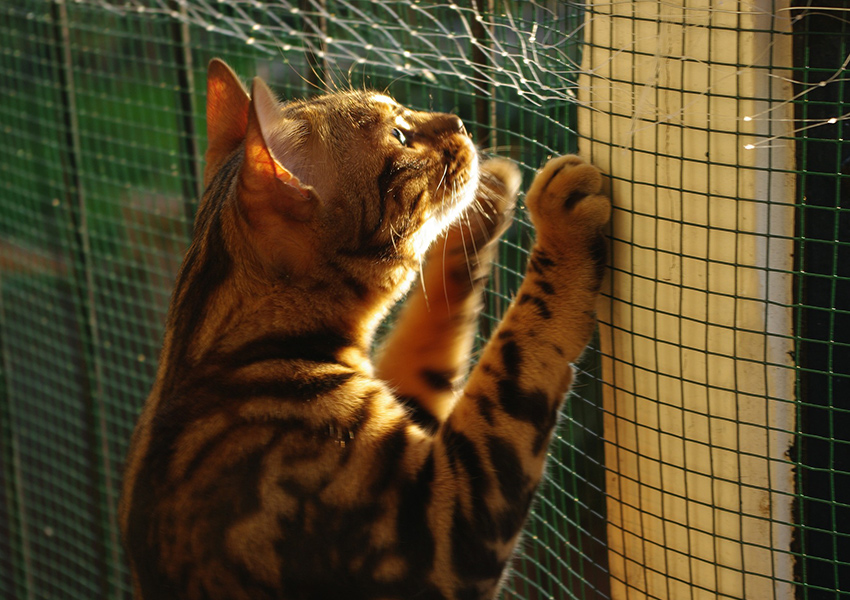
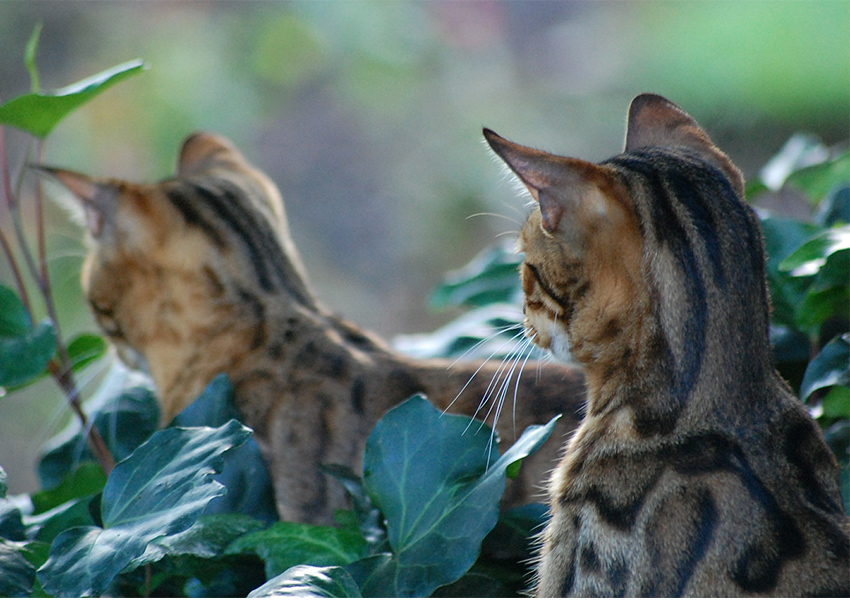

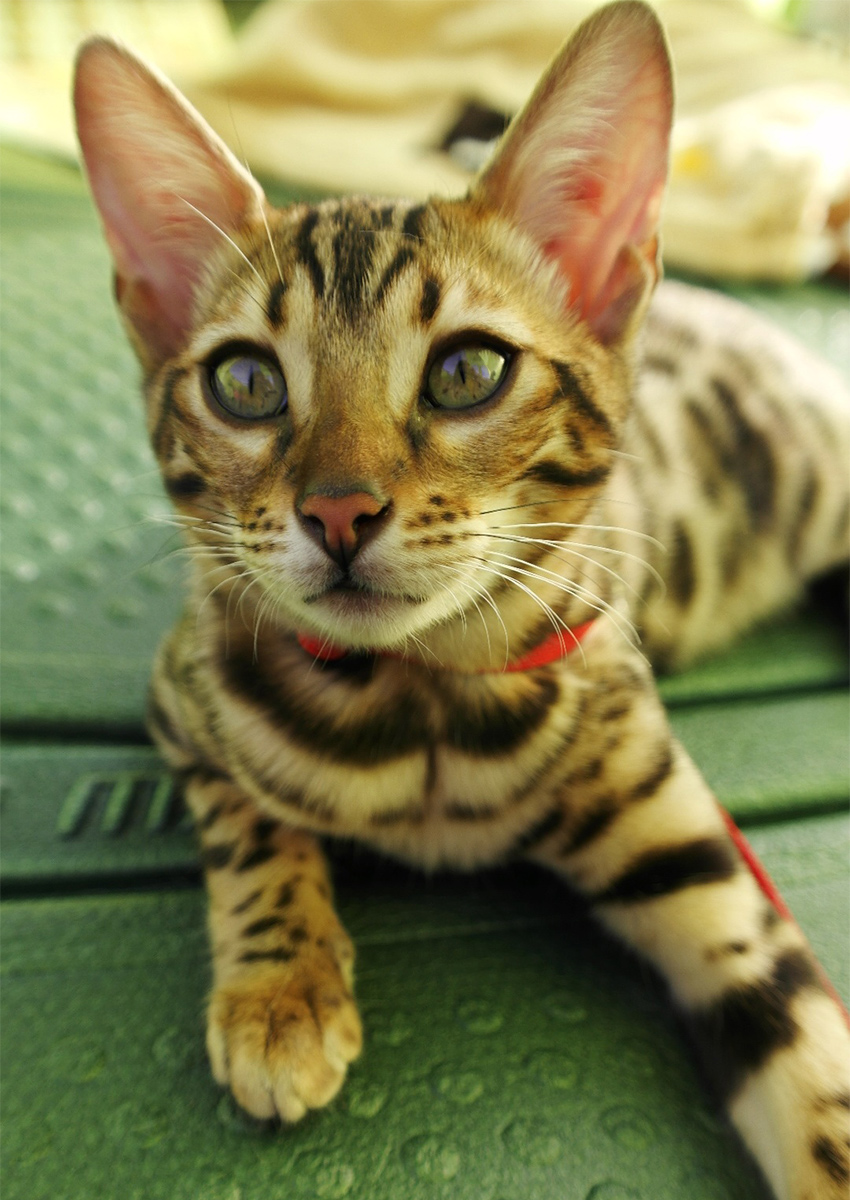
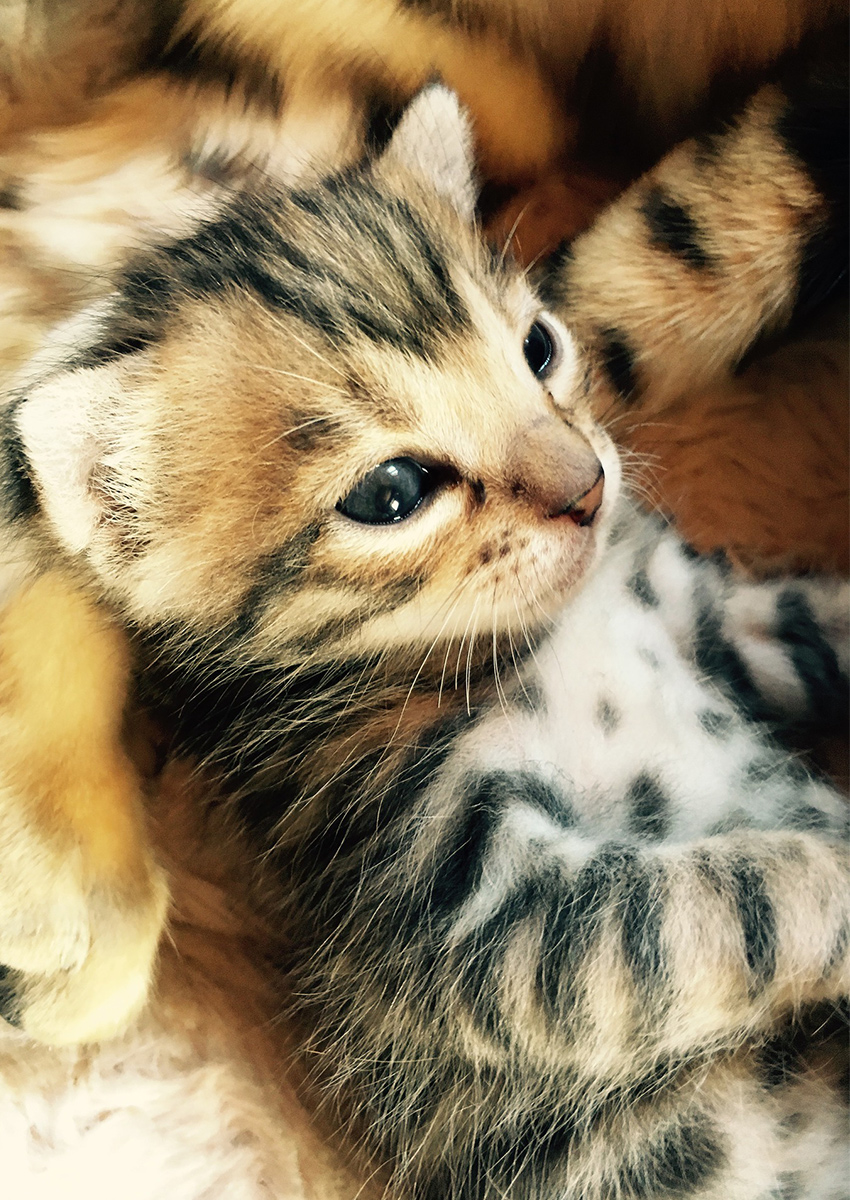
I have a female bengal age 12 yrs.7mos. And Cleo is everything a bengal should be . One difference is that she is very much a lap cat but , only to me . She is friendly but sceptical of new people. She absolutely does not like a hands on inspection of her body . She is very vocal and playful. Cleo was given to me at the age of 12 wks. I was going to breed her but as they say . The bengal cats are very loud . Needless to say I had her spayed at 7 mos. I don’t know if it is the breed or just her ,but she went into shock afterwards. I’m presumably sure it was from all the vet techs and employees wanting to pet her and touch her that was overwhelming for her . She prefers dogs over cats . But over all gets along well with kids and other pets . She has been a great joy to be in my life .
She sounds lovely Joyce 🙂
What do you mean by she went into shock?
I have a marble and he’s is the best and funniest cat I ever had . He is 10 yrs old and has the run of the house. His name is Raj
We have three Bengals . Memphis is Narbies . the oldest .We call him Mr grumpy paws . he is ahoy just kinda grumpy. Then Mua and Jada spotted then blue grey
so how much do they cost. doh ( bengal )
Usually $1100-1800
I have the Bengal cats. They are my live. So funny, so affectionate. The best cats.
tajh is my bengal he weighs 16# loves to be outside & hunt brings me all
things like birds, snakes,chipmunks, mice,rat,squirrels he is really spoiled and runs the house with all his different voices. he lets u know what he wants sometimes he will siit on my lap lov e my bengal
I have a silver marbled Bengal, she is 15 months old. She bites me, sometimes she just runs by nips me, drawing blood then runs off. Another thing she is bad about is messing on my bed if I have left the door open but uses the litter box. I haven’t been able to keep her off my counters or table. Looking for some tips on training her an an answer to why she messes on my bed always on my side of the bed. I have always had cats, my last cat lived for 22 years.
Bengals will typically display unwanted behaviors that you are describing if you keep them indoors. I only let my bengal mixes to homes that will be indoor/outdoor, or if the house is attached to a barn or some other large, enclosed area.
I have male Bengal golden spotted he’s now 15 and still very active lives with my Siamese cat one minute curled up together next fighting daily routine
My Bengal is 1 1/2. She is a delight. I’m getting another Bengal kitty in 3 weeks. They are like potato chips. 🙂
I have a female Bengal of 2.5 years old.
Tried once to let her breed with another male for a month with no success cos she is too fierce and the mate is young or maybe it’s passed her mating season.
Anyone have success with mating?
I am thinking about getting a Bengal cat and I don’t know much about them, so I am glad that I found this article. You make a great point that you should talk to potential Bengal breeders and make sure that the kittens they offer are playful and lively. Also, it makes sense that you should find out if the breeder has vaccinated the kittens for potential diseases like the flu. This would definitely give me peace of mind that I am getting a cat who will be healthy and live for a long time.
I have a female Bengal, she is lovely, very active, but not a lap cat. The male cats are more lovable. These cats can be destructive, if bored, they need at least an hour of your time with organized play daily. Only buy from a breeder who will let you see the cats and premises before you accept a kitten.
I have a bengal love her to bits but she actually controls me if I don’t pay her attention she attacks me if I go out and leave her she attacks me if the grand kids come she loves it never scratches or attacks them or any one else just me she is like my shadow where ever I go she follows I’m like a nervous wreck lol I look like a self harmed with the scratches on me, please could any one give me advice on how to stop her even when I go to work I’m having to take her to keep her happy so I dont get attacked I have to constantly give her my attention
She may need outdoor time or another play mate. She is probably not getting enough play time and has nothing to do when you are not at home. I raise Bengal/Coons and this behavior is typical if they: 1. do not get enough outdoor time 2. do not have enough to do or explore while you are not at home or 3. she does not get enough play time (may require a playmate). Typically, this behavior will cease if you can let her outdoors (build an outdoor enclosure attached to the house with a kitty door so she can go out on her “veranda” when you are not at home). My cats have free range since we are located in a rural location with a guard dog and I am always home.
We have 2 Bengal cats. Both females. Charlie is 14 years old and Mia is 1.5 years. They both have very different personalities. Charlie is a lap cat, but only with me. Mia is a lap cat sometimes, but mainly not. I do let both of them outside, and have not had any issues with allowing them out. They love to roam and sit in the sun while outside. We do have lots of toys for them inside as well. The basket is low enough, that they can select their own toys to play with, when the mood strikes. One other comment, I thought I would mention, is my husband is severely allergic to cats, but he is not allergic to the Bengals, and they both sleep in bed with us every night.
Me 2!!!! Swollen eyes, runny nose, causing asthma attacks but the bengals don’t bother me a bit. And although they aren’t “lap cats” when they decide to sit in your lap they becoming very demanding and refuse no. I have a snow male that is a year and a half and a golden female, 7 months who lives on me in bed. I always wake up with them both snuggled on my butt or legs and my little girl gets on my chest when I sleep on my back. I’m so excited to finally have house cats. I’m crazy about them!!! 💕
My daughter had a 2 year old bengal. She has extreme intelligence . I am trying to teach her simple commands also she is learning to fetch. She is such a pleasure.
I disagree that they are more prone to triggering allergies.
I have high allergy to cat dander and cats affect my breathing and eyes.
We have 3 bengals and my allergy is hardly triggered.
So I would regard them as more allergy friendly.
We have 2 bengals (sisters). One is more playful than the other. We just moved and they are settling nicely in the new house. It is much much bigger and they are going to get a 60 square meter out door area. For the moment we keep them in to make sure they have truly settled into the new house. They are not big lap cats unless it is cold.They love to be near us and will be in the study with us when working from home. If they don’t know where we are, they become vocal until we call them. So sweet, but not at 3 am. The circulate with who they will sleep; either with one of my daughters on the bed at their feet or with us. One tends to sleep mostly with us. They are playful, vocal at times and chirpy when they see birds. And their coat is super silky soft. We have a few friends who are allergic to cats, but not to ours. 11PM tends to be zoomies time when they chase each other. They are a total delight.
I had the privilege to adopt a TICA “Queen” Bengal from a breeder after she matured past breeding age (age 9). Venus was a delight to have around. Then I adopted a runt baby Maine Coon. I was trying to introduce them gradually but, Venus broke down the barrier and grabbed the Main Coon baby (Opal) by the scruff. Venus was determined to raise Opal as her own. Friends jokingly said that I had a cat who had a kitten. Needless to say they bonded and we never saw Venus without Opal. The breeder that I got Venus from failed to tell me that she had HCM. Just after her 12th birthday the HCM started giving her issues. She lived only with us for only three years. Venus passed on my birthday. But I cherish the short 3 years with her in our lives. Opal acts more like a Bengal than a Maine Coon. I guess Venus had a lot to do with that. I will have another Bengal in my life soon. #lovethatbreed
Hi, we have a Bengal named “Guus” ( a typical old Dutch name.. yes we are Dutch).
And the little mr. is 3 years old now and crazy as they come, but playfull, noisy, curious loving and kind too.
There is one odd thing. He has a bald tummy, a bit of a nervous thing of he washes it very intens. We teied other food and other litterbox filling bur that wasnt it. Even the vet did not have an explanation.
Does anybody know what it could be?
His fur is beside the tummy badness very smooth shiny and healthy looking. His overall health is perfect according to the vet.
I love love love this crazy smartass so much and allthough he does not seem bothered by his baldness… yet I am for two. Can somebody help me make him get his hair back on his spotted bald tummy?
We also have 2 Bengals. Prior to these 2, we had standard house cats, mix breeds. One of those female cats, “Raisin would lick herself in certain spots licking off the fur. Our vet gave her allergy shots and that stopped the obsessive licking for about a year. Of course nowadays you can get those plug in atomizers to help with allergies. Not sure if they work, but could be of help.